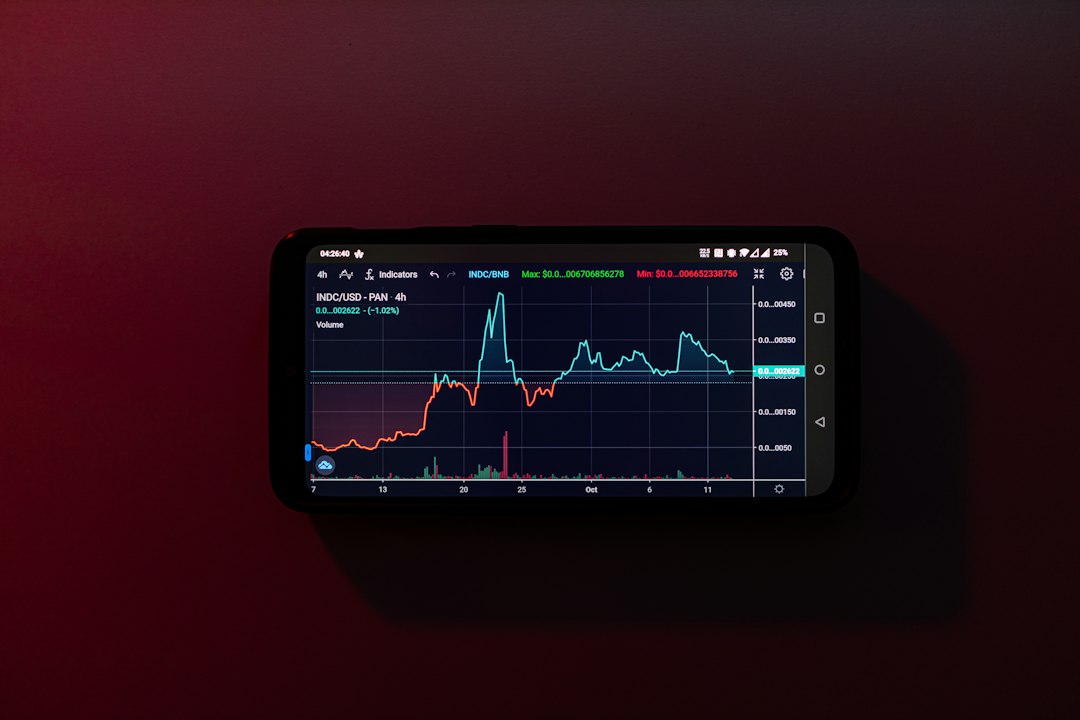Table of Contents
Introduction
Are you ready to take your email marketing skills to the next level? If you want to unleash the full potential of your email campaigns, then this article is for you!
We have curated a list of mind-blowing questions that will help you master the art of effective communication through email marketing.
In today’s digital world, email marketing plays a crucial role in reaching and engaging with your target audience. But how can you stand out from the crowded inbox and create compelling emails that drive conversions?
Our article will guide you through a series of thought-provoking questions that will challenge your current email marketing strategies and inspire you to think outside the box.
From crafting attention-grabbing subject lines to optimizing your email content for higher open rates, we cover it all.
But that’s not all! We have also included a table that provides a comprehensive overview of the best practices in email marketing.
| Topic |
Question |
| Subject Lines |
How can you create subject lines that grab attention? |
| Personalization |
Why is personalization important in your email campaigns? |
| Call-to-Action |
What elements make a strong call-to-action? |
Along with the table, we have also added an image that captures the essence of email marketing. Take a moment to appreciate the beauty of this image:

Understanding the basics of email marketing
Understanding the basics of email marketing
Email marketing is a powerful tool for businesses to connect with their audience and promote their products or services. It involves sending commercial messages to a group of people via email. To achieve success in email marketing, it’s essential to understand the basics and follow best practices.
Building an email list:
Start by building a permission-based email list. This involves obtaining consent from individuals to receive emails from your business. You can do this through subscription forms on your website or landing pages.
Email content:
Create engaging and relevant content for your emails. This could include newsletters, promotions, or informative articles. Keep your content concise, visually appealing, and easy to read.
Email design:
Design your emails with a visually appealing layout that aligns with your brand. Use images, colors, and fonts that represent your business.
Personalization and segmentation:
Personalize your emails by addressing recipients by their name. Segment your email list based on demographics, preferences, or behavior to send targeted and relevant content.
Email deliverability:
Ensure your emails reach the recipient’s inbox by following email deliverability best practices. This includes avoiding spam keywords, using a reputable email service provider, and regularly cleaning your email list.
Crafting compelling subject lines to grab attention
Crafting compelling subject lines is crucial when it comes to grabbing attention in email marketing.
One important strategy is to use powerful and attention-grabbing words that evoke curiosity or urgency, such as ‘exclusive,’ ‘limited-time offer,’ or ‘urgent.’
Additionally, personalizing subject lines can greatly increase open rates. Including the recipient’s name or referencing their recent actions or preferences can make the email feel more personalized and relevant.
Another effective technique is to create a sense of intrigue or mystery by using incomplete or provocative statements, such as ‘You won’t believe what happens next…’ or ‘Unveiling our best-kept secret.’
Furthermore, using numbers or statistics can help make subject lines more compelling. For instance, ‘5 tips to double your productivity’ or ‘80% off selected items.’
Lastly, keeping subject lines concise and to the point is essential. Most email clients display only a limited number of characters, so make sure the most important information is conveyed early on.
Segmenting your email list for better targeting
Segmenting your email list for better targeting
Email segmentation refers to the practice of dividing your email subscribers into different groups or segments based on various attributes or behaviors. By segmenting your email list, you can create more targeted and personalized email campaigns that are tailored to the specific interests and needs of each segment.
Segmentation allows you to send relevant content to the right people at the right time, which can significantly improve your email marketing effectiveness. By understanding your audience’s preferences, demographics, past purchases, or engagement levels, you can craft emails that are highly relevant and engaging. This can lead to higher open rates, click-through rates, and conversions.
There are various ways you can segment your email list, such as by demographics (e.g., age, gender, location), past purchase behavior, engagement level, or specific actions taken on your website or previous emails. The key is to collect and analyze data to identify meaningful segments that will allow you to personalize your email content and offers.
Designing visually appealing and mobile-responsive emails
Designing visually appealing and mobile-responsive emails is crucial for successful email marketing. With the increasing use of mobile devices, it is important to ensure that your email design is optimized for a seamless experience across different screen sizes.
When designing visually appealing emails, consider the use of eye-catching colors, engaging imagery, and well-formatted text. Use a clear and concise layout that aligns with your brand identity. Incorporate visually appealing elements such as buttons and icons to encourage interaction with your email content.
To make your emails mobile-responsive, use a responsive email template or code your emails to adapt to different screen sizes. Optimize font sizes, button sizes, and images to be easily readable and clickable on mobile devices. Test your emails across various devices and email clients to ensure consistent visual display.
Remember to keep the file size of your emails small to avoid slow loading times. Also, provide text-based alternatives for images and avoid using too many images to prevent rendering issues in certain email clients.
Crafting personalized and engaging email content
Crafting personalized and engaging email content is essential to making a lasting impression and driving engagement with your audience. When creating email content, it’s important to tailor it to the specific needs and interests of your subscribers. Start by segmenting your email list based on demographics, interests, or previous interactions. This allows you to send targeted content that resonates with each segment.
Next, focus on creating compelling subject lines that grab attention and entice recipients to open your emails. Personalization can play a significant role here, such as including the recipient’s name or referencing their previous purchases or interactions. Once you have their attention, deliver valuable and relevant content that addresses their pain points, offers solutions, or provides exclusive offers or insights.
Make sure your emails are visually appealing by using eye-catching design elements and formatting. Break up text with subheadings and bullet points to improve readability. Include engaging visuals, such as images or videos, to enhance the overall user experience.
Lastly, don’t forget to include a clear call-to-action that guides recipients to take the desired action, whether it’s making a purchase, signing up for an event, or downloading a resource. A well-crafted email should provide value, establish a connection, and motivate recipients to take the next step.
Optimizing email deliverability and avoiding the spam folder
Optimizing email deliverability and avoiding the spam folder are crucial for successful email marketing campaigns. Email deliverability refers to the ability of your emails to reach the intended recipients’ inboxes and not get filtered into the spam folder.
To optimize email deliverability, there are several best practices to follow:
1. Use a reputable email service provider (ESP): Choose a reliable ESP that has a good reputation for deliverability.
2. Build a healthy email list: Use opt-in methods to grow your email list organically and avoid purchasing email lists.
3. Segment your email list: Divide your subscribers into smaller segments based on their preferences and behaviors to send more targeted and relevant emails.
4. Personalize your emails: Use the recipient’s name and tailor the content to their interests for better engagement.
Analyzing email campaign performance and making data-driven improvements
Analyzing email campaign performance and making data-driven improvements
Effective email marketing relies on analyzing campaign performance to identify areas for improvement and making data-driven decisions to optimize future campaigns. There are several key metrics to consider when evaluating email campaign performance:
Open rate: The percentage of recipients who open the email is a measure of the email’s subject line and overall appeal.
Click-through rate: This metric indicates the percentage of recipients who clicked on a link within the email. It measures the effectiveness of the email’s content and call-to-action.
Conversion rate: The percentage of recipients who take a desired action, such as making a purchase or signing up for a newsletter, indicates the effectiveness of the email in achieving its goals.
By tracking these metrics and analyzing the data, email marketers can gain insights into what is working and what needs improvement.
Using A/B testing, email marketers can test different variables such as subject lines, content, and CTAs to identify the most effective strategies. Additionally, segmentation can help target specific audience groups with tailored content for better engagement.
Regularly reviewing and analyzing email campaign performance allows email marketers to make data-driven improvements to optimize future campaigns and achieve better results.
Implementing effective email marketing automation strategies
Implementing effective email marketing automation strategies
Email marketing automation can be a powerful tool for businesses to engage with their customers and drive conversions. By automating various aspects of email marketing, businesses can save time and effort while delivering personalized and timely messages to their audience.
One key aspect of implementing effective email marketing automation strategies is segmenting your audience. By dividing your subscribers into smaller groups based on their demographics, interests, or purchase history, you can tailor your emails to better resonate with each segment. This personalization can significantly improve open rates, click-through rates, and conversions.
Another important strategy is creating automated workflows . These workflows are triggered by specific actions or events, such as a new subscriber joining your list or a customer making a purchase. Automated workflows can include welcome emails, abandoned cart reminders, post-purchase follow-ups, and more. These sequences can nurture leads, build relationships, and drive sales.
Additionally, monitoring and analyzing metrics is crucial for optimizing your email marketing automation. By tracking metrics like open rates, click-through rates, and conversions, you can identify what’s working and what’s not. This data-driven approach allows you to make data-backed decisions and continuously improve your email marketing strategy.
Conclusion
In conclusion, mastering email marketing skills requires understanding the basics of email marketing and following best practices. Building a permission-based email list is essential, along with creating engaging and relevant email content. Designing visually appealing and mobile-responsive emails is crucial in today’s mobile-centric world. Segmenting the email list based on demographics, preferences, or behavior allows for better targeting and personalization. Optimizing email deliverability and avoiding the spam folder is necessary for successful email campaigns. Analyzing email campaign performance and making data-driven improvements is key to optimizing future campaigns. Implementing effective email marketing automation strategies, such as segmenting the audience and creating automated workflows, can save time and deliver personalized messages. To become a master email marketer, one needs to have a strong understanding of email marketing strategies, knowledge of email automation tools, proficiency in copywriting and design, and analytical skills to measure and optimize campaign performance. Improving email open rates can be achieved through personalization, experimenting with send times, and optimizing preview text. Key engagement metrics to track include open rate, click-through rate, conversion rate, bounce rate, unsubscribe rate, and spam complaint rate. Best practices for building an email list include creating compelling lead magnets, using prominent call-to-action buttons, optimizing websites for lead capture, and leveraging social media. Effective email marketing campaigns can be created by defining goals, segmenting the audience, creating engaging content, using eye-catching visuals, optimizing for mobile devices, and performing A/B testing to refine strategies.
Frequently Asked Questions
What are the key skills required to become a master email marketer?
Some key skills required to become a master email marketer include a strong understanding of email marketing strategies, knowledge of email automation tools, proficiency in copywriting and design, and analytical skills to measure and optimize campaign performance.
How can I improve my email open rates?
To improve email open rates, you can try personalizing your subject lines, experimenting with different send times, segmenting your email list, and optimizing your preview text to entice recipients to open your emails.
What are some email marketing engagement metrics to track?
Some email marketing engagement metrics to track include open rate, click-through rate, conversion rate, bounce rate, unsubscribe rate, and spam complaint rate.
What are the best practices for building an email list?
Some best practices for building an email list include creating compelling lead magnets to encourage sign-ups, using clear and prominent call-to-action buttons, optimizing your website for lead capture, and leveraging social media and other channels to promote your newsletter or offers.
How do I create effective email marketing campaigns?
To create effective email marketing campaigns, it’s important to define your goals, segment your audience, create engaging content, use eye-catching visuals, optimize for mobile devices, and perform A/B testing to refine your strategies.




